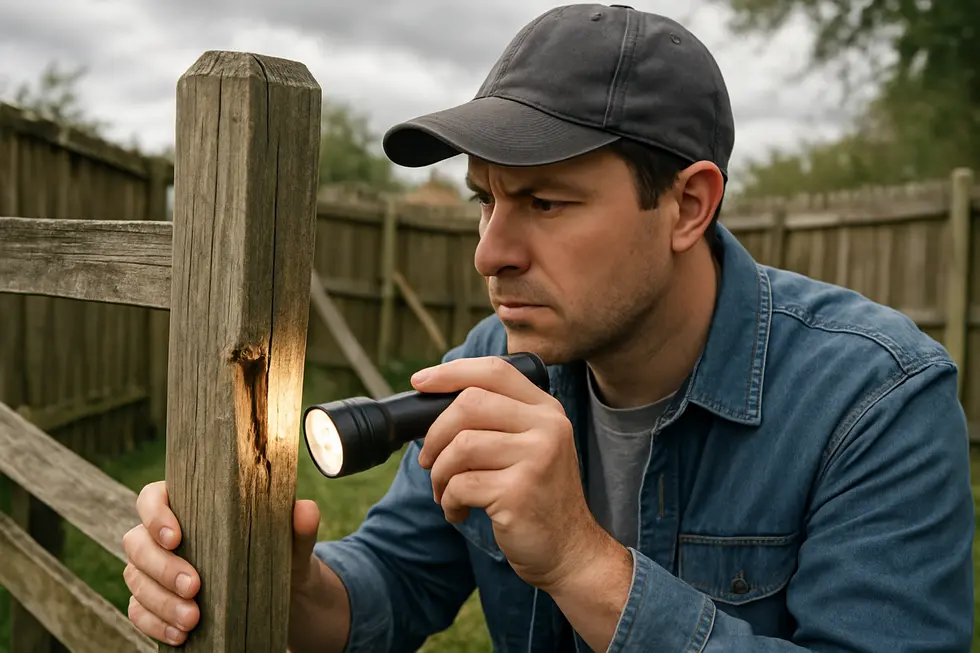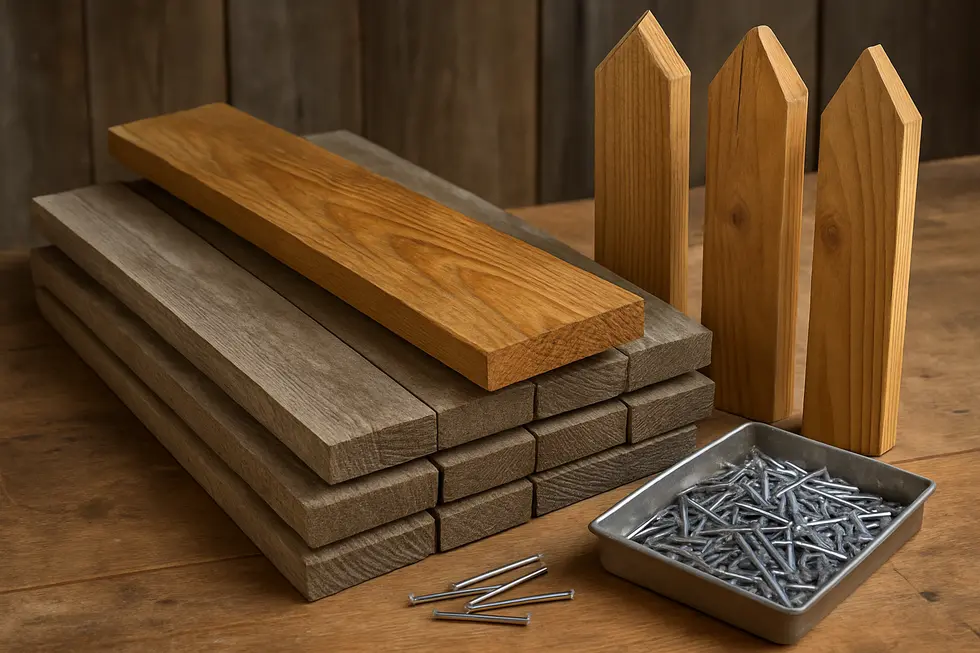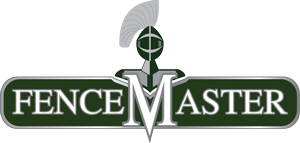Storms can cause unexpected damage to your fence, leaving your property vulnerable and less attractive. Knowing how to approach fence repair ensures you restore both safety and aesthetics quickly. From assessing damage to choosing materials and professional help, this guide prepares homeowners to tackle fence repairs confidently after storm events. Addressing fence damage promptly can save money and prevent further issues. Whether it’s a broken post or a leaning panel, understanding repair options helps you get back on track smoothly and safely.
Assessing Storm Damage to Your Fence

After a severe storm, the first step homeowners should take is to conduct a careful and comprehensive assessment of their fencing. Safety is paramount during this process; always approach the damaged area with caution, especially if you notice leaning or broken sections that could collapse further. Begin by inspecting the entire length of the fence, looking for obvious signs of damage such as broken or missing panels, bent or snapped posts, and any areas that have shifted from their original positions.
Pay close attention to the posts, as they are the foundation of your fence. Check whether any posts are loose, cracked, or completely fallen over. Shake the posts gently—to assess stability—without applying excessive force, which could cause more damage or injury. Also, examine the panels or other fencing materials for cracks, warping, or breakage. If a panel is leaning or hanging loosely, it could indicate underlying post issues or damage to the panels themselves.
Leaning or sagging sections are often signs of compromised support structures. When inspecting, look for signs of rot, rust, or any other material deterioration that might weaken your fence’s integrity. Additionally, inspect for debris, such as fallen branches or leaves, that may have become lodged or caused additional stress to the fencing.
In addition to visual inspection, it’s wise to test the structural components by gently applying pressure or trying to move sections. Any movement indicates a need for repairs. Remember, safety precautions include wearing gloves, sturdy footwear, and eye protection to avoid injury from sharp or loose materials.
A thorough assessment also involves viewing the damage from different angles and taking notes or photos for documentation. Photographs can be helpful when consulting professionals or obtaining repairs quotes. Identifying all problem areas before beginning repairs ensures that you won’t overlook hidden damage that could lead to further issues down the line.
Sometimes, damage can extend beyond the visible. For example, shifting soil or erosion around the posts can undermine stability without immediately obvious signs. It may be necessary to check the ground around each post for signs of movement, such as gaps or tilting. If your property has a fence that borders a slope, pay special attention to posts on the inclined sections.
Overall, a methodical approach—combined with safety precautions and detailed observation—will give you a complete picture of the storm’s impact. This comprehensive assessment stage is critical. It helps you determine whether repairs can be performed DIY or if you need to seek professional assistance, especially when dealing with structural damage or complex damage scenarios. Proper evaluation not only restores your fence’s safety but also preserves your property’s curb appeal, ensuring it remains a strong barrier and attractive feature after the storm passes.
For complex or extensive damage, it’s advisable to consult fencing professionals who have experience with storm repairs, ensuring that your fence will be restored to its full strength and durability. Accurate damage assessment, combined with expert advice, can significantly streamline the repair process and safeguard your property in future storms.
Choosing Repair Methods and Materials

When deciding how to repair your fence after a storm, evaluating the extent of the damage is crucial. Minor issues, such as a few loose or leaning panels, may be repaired with simple fixes like reattaching or reinforcing existing components. However, more severe damage, like broken or rotted posts, often requires more extensive solutions, including replacing entire sections or individual parts.
For minor repairs, replacing damaged panels might involve removing the affected piece and installing a new one that matches your existing fencing material. This method is quick and cost-effective, especially when the damage is localized. In contrast, replacing broken posts is a more involved process, requiring excavation around the post, removing the damaged support, and installing a new, durable post. Ensuring the replacement post is properly anchored and set at the correct height is essential for long-term stability.
When the damage is extensive or the fencing is aging, installing a new fence might be the most practical option. Modern fencing materials offer increased durability and can stand up better against storm elements. For storm-prone areas, selecting materials that withstand harsh weather, such as vinyl or aluminum, can prolong the lifespan of your fence and reduce future repair costs. Vinyl fencing, for example, is resistant to rot and insect damage, making it an excellent choice for durability.
Choosing the right repair materials is equally important. If you’re repairing a wooden fence, consider pressure-treated wood or composite options that resist moisture and decay. Aluminum or vinyl fencing is ideal if you want low-maintenance, storm-resistant fencing that requires minimal upkeep. When selecting materials, always prioritize those designed for high wind speeds and severe weather conditions common in your region. This proactive approach minimizes the likelihood of needing frequent repairs.
For complex damage involving structural issues, leaning or collapsed sections, or extensive post damage, consulting a professional fencing contractor is advisable. Skilled professionals can assess the damage accurately and determine whether a full replacement or significant repairs are necessary. Additionally, professional installers can ensure the fencing is anchored correctly and installed according to manufacturer specifications, resulting in a more resilient barrier.
In cases where repair involves custom or ornate fencing designs, or if you want to upgrade your fence with enhanced features, professional expertise can help you select the best materials and methods to preserve the aesthetic while improving functionality. Visiting a specialized resource like Fence Master Houston can offer guidance on choosing the appropriate fencing style and materials suited for your needs.
Ultimately, understanding the severity of your storm damage and selecting repair methods and materials tailored to your specific situation will ensure your fence restores both safety and curb appeal efficiently. Properly maintained and appropriately repaired fencing can withstand future storms better, saving you time and money in the long run.
Final words
Promptly tackling fence repair after a storm not only restores your property’s privacy and security but also prevents further deterioration. Proper assessment and choosing the right materials or professional help ensures lasting results. Remember, addressing damage early minimizes costs and maintains your home’s curb appeal. Keep safety in mind throughout the process, and don’t hesitate to seek expert assistance when needed. With the right approach, your fence can withstand future storms better and look great once more.
Crafting commercial & residential fence and gates with precision since 1979.
Learn more: https://www.fencemasterhouston.com/get-estimate.html
About us
Established in the 1970s, Fencemaster is a Houston fence company, we have been a family owned and operated business eager to improve and grow. With our competitive prices, professional craftsmanship, and unmatched commitment to our customers, we always find a way to satisfy your fencing needs. We guarantee our prices, offering only the best materials and workmanship.


